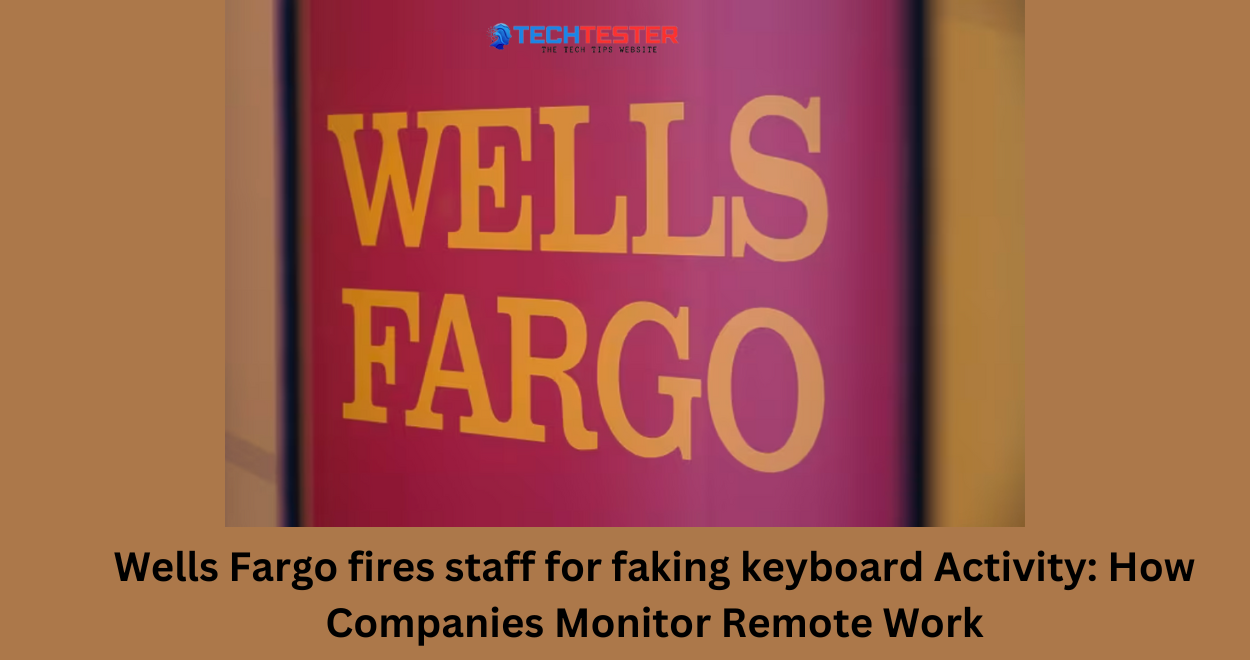In one recent case, the American bank Wells Fargo dismissed about 12 of its workers who used ‘mouse jiggler’ software to simulate activity on their desks. The employees were dismissed last month after it was discovered that they were engaged in unethical practice of pretending to work in order to mislead the company during working hours.
Image credit: REUTERS
The bank assured that it does not condone such unethical behavior from its employees and took corrective action by dismissing or accepting the resignation of those implicated in the allegations involving simulation of keyboard activity mimicking work.
What is a Mouse Jiggler?
A mouse jiggler is a software application that replicates mouse movement or clicks to help a computer detect the user presence. Such tools have become popular especially after the COVID-19 outbreak and the shift towards remote working.
Although Wells Fargo did not clarify if the incident was related to remote staff members, the bank has adopted a hybrid work model since 2022, enabling its workers to work from home sometimes.
How Companies Monitor Remote Employees
The increase in remote work has led to the adoption of new technological systems and tools for tracking employee performance and verifying that they are not taking advantage of the remote working policy. However, this practice has raised issues of privacy and whether such measures amount to infringement of the rights of employees.
Common Employee Monitoring Methods
User Activity Monitoring Software: Records key presses, mouse clicks, URLs, programs, and applications; it can take screenshots at set intervals.
Network Monitoring: Surveilling the visited websites, and preventing the access to specific websites or groups of websites.
Email and Messaging Monitoring: Sifting through corporate email accounts, instant messaging platforms, and collaboration tools.
Location Tracking: Tracking of assets like company issued devices or vehicles to remote employees.
Webcam Monitoring: Some monitoring software can allow a webcam to confirm an employee is present.
Productivity Tracking: Devices that track working time, breaks, attendance, and other metrics.
Finding the Right Balance
In general, it is legal to monitor employees provided that the employees are informed beforehand. However, it is important to be sensitive to the employee’s privacy while monitoring them. According to experts, employers should declare the monitoring practices being used and engage their employees in discussions that help them understand better what is reasonable in terms of remote work.
Conclusion
Navigating the complexities of monitoring and privacy becomes even more challenging as remote and hybrid work models continue to grow popular among companies and employees. Approachable management, well-defined rules and regulations, and respect for the employees’ rights and freedoms can mitigate these threats and optimize organizational performance in the digital environment.
FAQs
Q1: Why did Wells Fargo fire employees for using mouse jigglers?
A: Wells Fargo fired around a dozen employees for using mouse jiggler software to fake keyboard activity and deceive the company into thinking they were actively working during work hours.
Q2: Are there privacy concerns around employee monitoring?
A: Yes, excessive employee monitoring has sparked debates about infringing on workers’ privacy rights and autonomy. Experts recommend finding a balance and being transparent about monitoring practices.
Q3: What can employees do if they feel monitoring is excessive?
A: Employees should review company policies, consult employee handbooks or HR, and have open discussions with management about concerns over privacy or monitoring practices.
Amit Gupta is a tech lover and an enthusiastic blogger who completed his B.Tech in Computer Science. An enthusiast of emerging technology and discoveries, he shares valuable views and tips on his blog from his personal experiences. Through his articles, he tries to simplify tech concepts and put readers in the position to take responsible decisions in the rapidly changing digital infrastructure world. Follow me on Facebook and linkedin.

